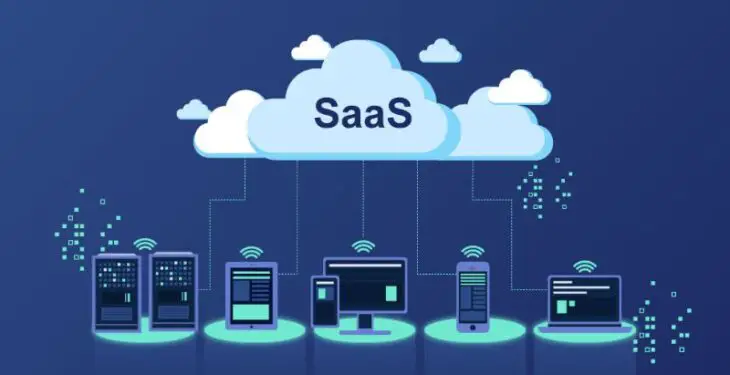Recurring revenue is the lifeblood of Software-as-a-Service (SaaS) businesses. It is a business model where customers pay a subscription fee on a regular basis to access and use the software. Unlike one-time purchases, recurring revenue provides stability, predictability, and the potential for long-term growth.
Whether you’re a startup or an established SaaS brand, there’s every reason to continue optimizing your revenue growth and tighten loose ends.
The strategies below will help you optimize customer retention, expand your customer base, and drive sustainable revenue growth for your SaaS product.
1. Focus on Customer Success and Retention
Customer success should be a top priority for any SaaS company aiming to maximize recurring revenue. Ensuring that your customers achieve their desired outcomes and derive value from your product will drive customer retention and satisfaction. Implement proactive customer success strategies such as onboarding programs, ongoing training, and regular check-ins to support customers in their journey.
Most importantly, provide exceptional customer support, promptly address their concerns, and continuously monitor customer satisfaction metrics. Successful retention not only preserves existing revenue streams but also boosts word-of-mouth referrals and upselling opportunities.
2. Offer Flexible Pricing Plans
Tailor your pricing plans to cater to different customer segments and their unique needs. By offering flexible pricing options, you can attract a wider customer base and capture more recurring revenue.
Consider tiered plans with varying features and pricing levels, allowing customers to choose the plan that aligns with their requirements and budget. You may also want to consider offering annual plans with discounts to incentivize customers to commit to longer-term subscriptions.
3. Upselling and Cross-Selling
Existing customers are a valuable source of recurring revenue. Leverage upselling and cross-selling strategies to maximize revenue from your current customer base. Identify opportunities to offer additional features or upgrades that align with customers’ evolving needs.
Upselling involves persuading customers to move to a higher-priced plan with increased functionality, while cross-selling suggests complementary products or add-ons that enhance the value of their existing subscription. By proactively showcasing the benefits and value of these options, you can increase customer lifetime value and recurring revenue.
4. Implement Effective Trial Periods
Offering a free trial or a limited-time trial period can be an effective way to introduce potential customers to your SaaS product and convert them into paying subscribers. But ensure that the trial period provides enough time for users to experience the full value of your product and understand its benefits.
During the trial, provide exceptional support and resources to help users maximize their experience. Offer clear pricing information and incentives to convert trial users into paying customers.
5. Leverage Data and Analytics
Data and analytics are invaluable for understanding customer behavior, identifying trends, and making data-driven decisions to maximize recurring revenue. Leverage analytics tools to gain insights into user engagement, conversion rates, and churn metrics. Use this data to identify areas for improvement, optimize pricing strategies, and personalize customer experiences.
For example, you might discover that users tend to cancel their subscription when you bombard them with too many upsells or increase pricing. This insight will inform you on what to do and what not to do to avoid that undesired reaction. Not all analytic tools work the same, so it’s a great idea to read about the best SaaS analytics tools to choose the one most suitable for your needs.
Key Performance Metrics (KPIs) to track for your SaaS business include churn rate, customer lifetime value, and user engagement. These metrics will help you to identify areas for improvement.
6. Invest in Customer Education and Resources:
Educating your customers about your product’s features, updates, and best practices can significantly impact customer retention and recurring revenue. Provide comprehensive documentation, video tutorials, and knowledge base articles to help users maximize the value of your product. Offer training sessions, webinars, and workshops to deep-dive into specific functionalities and use cases.
By investing in customer education, you empower users to fully utilize your product’s capabilities, increasing their satisfaction and the likelihood of renewing their subscriptions.
One way to go about this is to use tutorials, FAQs, and troubleshooting guides to address common customer questions and concerns.
7. Continuous Product Innovation
Actively engage with customers to understand their evolving needs and pain points. Incorporate their feedback into your product roadmap and prioritize feature development accordingly.
Furthermore, remember to regularly communicate product updates and new features to your customers, highlighting the added value they bring. Consider creating a feedback loop with customers to gather ideas for future enhancements and iterate on your product strategy.
8. Foster a Community
Establish a dedicated online community forum or discussion board where users can interact with each other and your team. Regularly contribute to the community by providing valuable insights, answering questions, and showcasing customer success stories. Host virtual events, meetups, or user conferences to facilitate networking and knowledge sharing among your customer base.
9. Implement Effective Customer Onboarding
The onboarding experience sets the stage for long-term customer success and retention. Streamline the onboarding process to ensure new customers can quickly understand and start utilizing your product.
Provide guided walkthroughs, interactive tutorials, and tooltips to familiarize users with key features and functionalities. Offer personalized onboarding assistance through live chat or email to address any questions or challenges users may encounter.
To implement this, consider designing an intuitive onboarding flow that guides new users through the essential steps of setting up and using your product. It’s also smart to Offer in-app guidance and tooltips to provide contextual information and simplify the learning curve.
10. Prioritize Customer Feedback and Support
Actively listen to customer feedback and prioritize support to maintain high customer satisfaction and retention rates. Provide multiple channels for customers to reach out, such as email, live chat, or a dedicated support portal.
Respond promptly to inquiries, issues, and feature requests, demonstrating your commitment to addressing customer needs. Incorporate customer feedback into product improvements and openly communicate updates based on their suggestions.
Conclusion
Maximizing recurring revenue for your SaaS product requires a strategic approach that prioritizes the overall customer experience. By implementing the tips discussed above, you can optimize your revenue streams, boost customer retention, and position your SaaS product for long-term success in a competitive market.
Remember, recurring revenue not only ensures financial stability but also allows for continuous growth and the ability to provide ongoing value to your customers.






